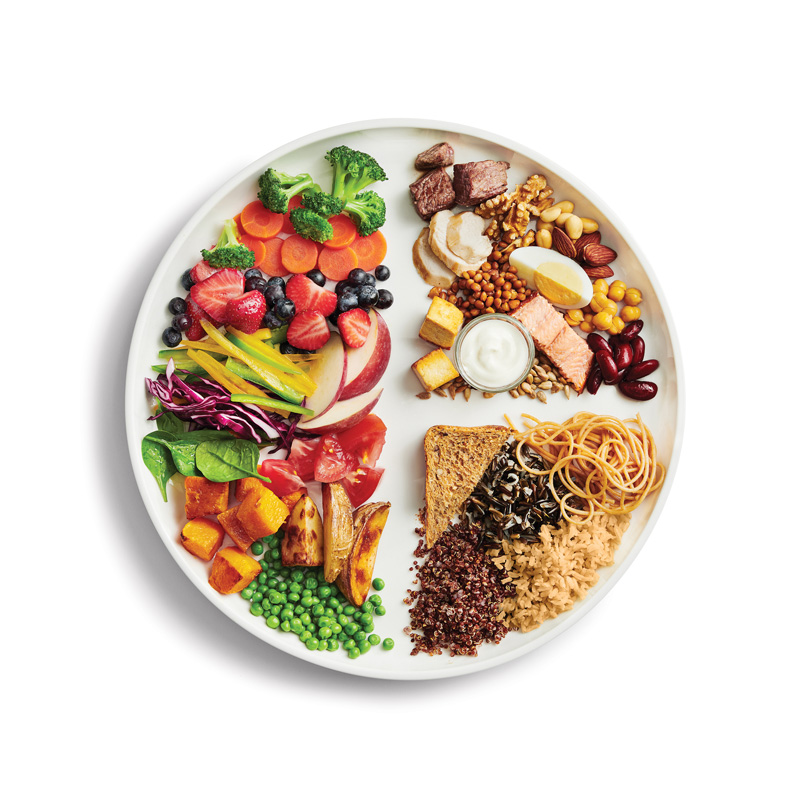
Canada’s updated food guide, released Jan. 22, drops milk and encourages Canadians to have a higher intake of vegetables, fruits, and assorted proteins.
Canada’s Food Guide illustration shows a greater emphasis on fruits and vegetables which take up half of a dinner plate, one quarter whole-grain foods, and one quarter protein foods including tofu, seeds, nuts, and limited meat.
“Eat plenty of vegetables, and fruits, whole grain foods and protein foods. Choose protein foods that come from plants more often,” said the Government of Canada’s food guide website.
The food guide website also recommends that Canadians, “limit highly processed foods. If you choose these foods, eat them less often and in small amounts. Make water your drink of choice.”
“I think it’s been a long time coming for us to work on increasing our intake of whole foods such as fruits, vegetables, nuts and seeds,” said nutrition specialist Eric Elliott.
Elliott added he was surprised the government took an emphasis on the environmental impact of food production with recommendations to consume less red meat.
However, limited dairy, limited meat, and a higher consumption of assorted proteins were not the only changes to the guide.
The new guide no longer considers fruit juices to be the same as a regular serving of fruit.
“Fruit is still a great option for people to keep in their diet when it comes to fiber and micronutrient content,” Elliott said.
He added, “The way fruit juices were produced, it reduced and or eliminated much of the value that eating whole fruit has.”
However, Elliott said he does have issues with the protein and dairy recommendations.
“Red meat is some of the most nutrient dense food on earth when harvested properly,” he said.
Elliott added, Chestermere residents can follow a very basic approach to ensure their nutrition is on point.
He recommends eating real foods, mostly plants, everything in moderation, including moderation.
“I often tell clients to shop the perimeter of the grocery store and that’s what this food guide is emphasizing.
“From there, don’t stress out about the little things, such as nights out or enjoying the occasional processed treat,” Elliott said.
He added, there are so many resources already telling Canadians what not to eat, depending on current trends, Canadians go from demonizing fat, to carbs and back again.
“We have a bad relationship with food and are scared what might happen to us if we enjoy a piece of cake on our birthday,” Elliott said.
“Canada’s food guide was definitely in need of restoration but creating fear tactics around food isn’t the solution either. We should strive to eat whole, nutrient rich foods most of the time and enjoy ourselves when we get the chance with some of the treats we enjoy,” he added.
Good nutrition is simple, Elliott added, but it’s not easy.
“For years we’ve known that eating foods like broccoli and steak are better options, but we often choose less nutritious options.
“The food guide didn’t change that. We have to focus on making better decisions more often and that’s how we’re going to get the results we’re looking for,” Elliott said.
One thing Elliott wishes people took into consideration when purchasing food, is that they have to actually eat it.
People will often purchase foods that are unappealing because they think they should, instead, Elliott encourages people to find ways to enjoy the things they want in moderation and be happy with food.
He added, “Food is supposed to be an enjoyable experience, not something you have to pace your way through because you hate it. There are ways to make dishes you enjoy that are nutrient dense and tasty.”









